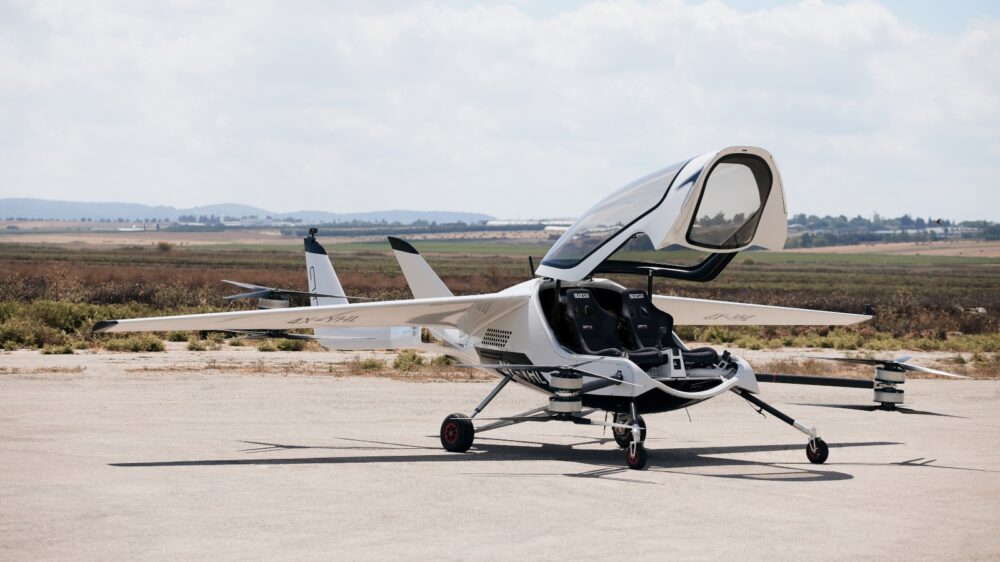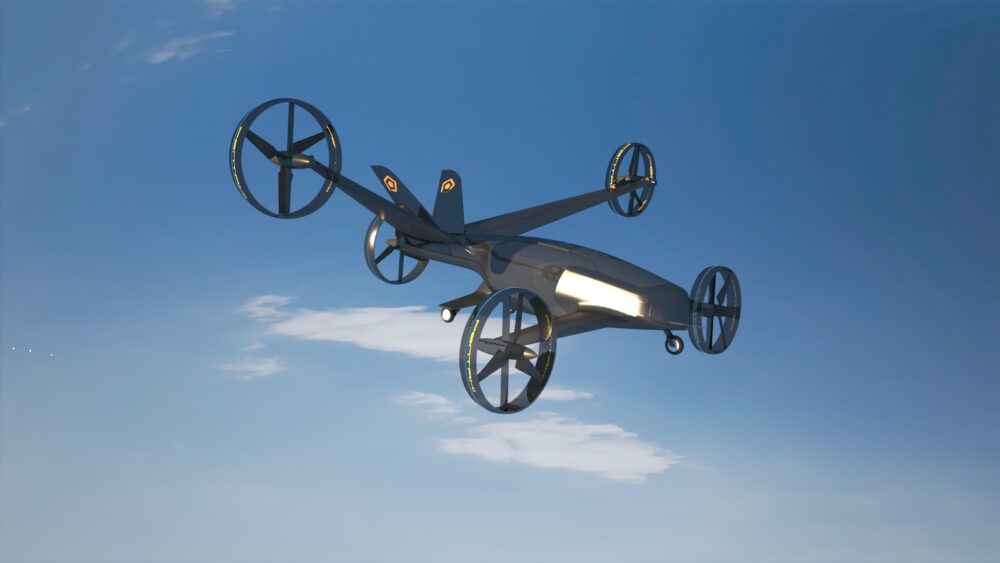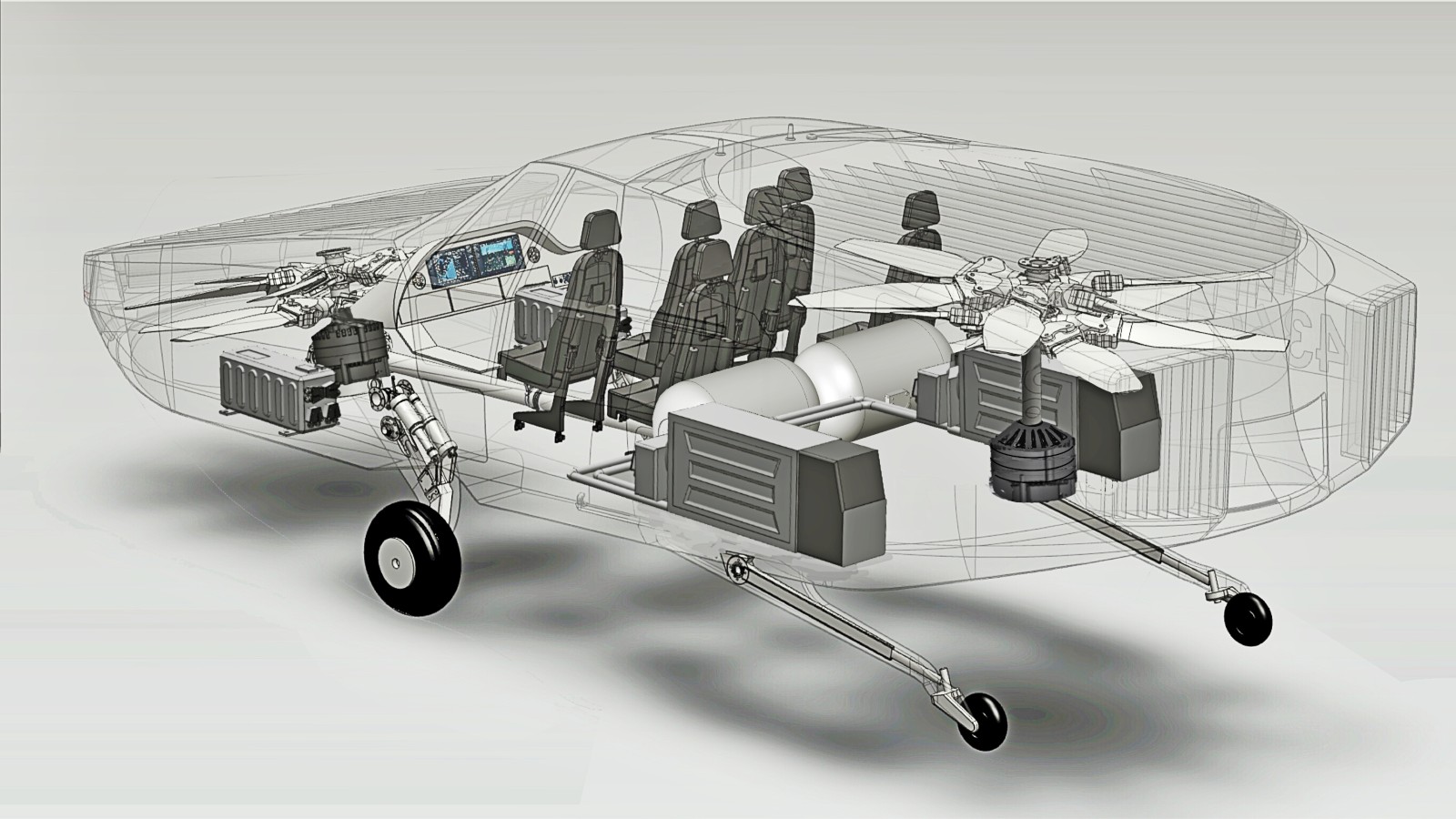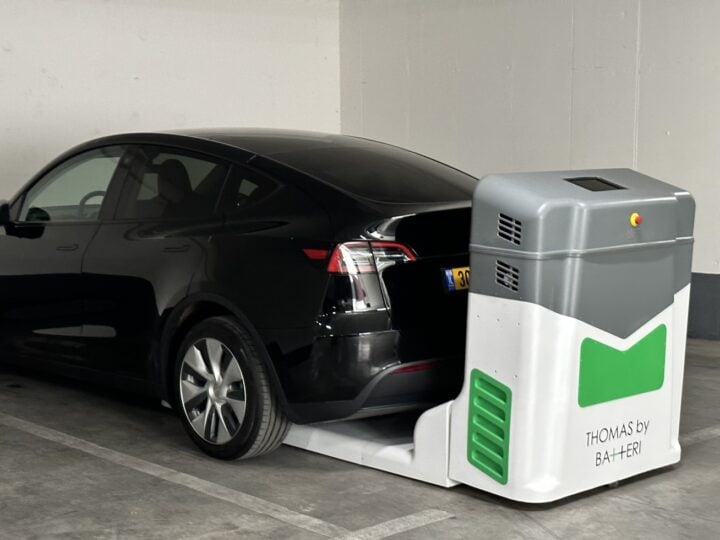When Pardes Hanna-based startup AIR announced in June that it successfully completed the first regulator-supervised test of its flying car prototype in Israel, it moved eVTOLs – “electric-powered vertical take-off and landing” vehicles – one step closer to reality.
Hovering over the green fields of Kibbutz Megiddo in northern Israel, under the supervision of the Civil Aviation Authority, the AIR ONE vehicle wowed onlookers and delighted the company’s CEO, Rani Plaut, who called it “truly awe-inspiring to watch AIR ONE lift off the ground for the first time [marking] the beginning of a long journey that will continue to a manned flight test and later evolve into mass production unit testing.”
AIR is just one of a few Israeli companies vying to bring George Jetson’s flying car into the 21st century. It’s a market estimated by Morgan Stanley to reach $1.5 trillion by 2040.
Why has tiny Israel taken a leading position in the flying car space? It starts with the military.
The IDF has been innovating in the air since the 1967 Six-Day War when Israeli military targets along the Suez Canal were being taken out by Egypt’s new surface-to-air missile systems, hidden behind a 30-foot sand well the Egyptians built to limit Israel’s ability to conduct visual reconnaissance.
So, what did the Israelis do?
Major Shabtai Brill came up with what seemed a crazy idea at the time: Attach a camera to the bottom of a toy airplane and fly it by remote control over the border to see what was happening.
That playful ingenuity evolved into a robust industry of UAVs – unmanned aerial vehicles or drones – that today account for about half of all Israel Air Force flight hours.
As is the case so often with military technology bleeding into civilian products, Israel’s drone expertise is now finding a new home with the growing slate of flying-car startups.
“We have the best people in the world in the area of autonomous aircraft,” Yair Dubester, CEO of flying car company Pentaxi, tells ISRAEL21c.
He’s referring to his own company, of course, but he could just as easily be referencing the overall ecosystem in the startup nation.
ISRAEL21c takes a look at six of the leading contenders in the race to bring flying vehicles to market.
AIR

“There are approximately 1.5 billion cars in the world with about 80 million cars produced every year,” notes Plaut. “If we can get 10,000 ‘cars’ into the air, we can start making a dent” in the planet’s worsening traffic congestion.
AIR is already accepting pre-orders for its all-electric two-seater AIR ONE, which has a range of 110 miles on a single charge at speeds up to 155 miles per hour.
AIR ONE has collapsible wings for easy parking and can take off and land from any flat surface. It can be hooked up to a trailer to take to your vacation bungalow and, at the size of just two cars in width, can be parked in many American garages.
A working vehicle is expected by 2024, although full certification in the United States might take another four to five years. The price: $150,000 a unit, which may sound like a lot but it’s not much more than a tricked-out Tesla.
AIR ONE is unique among flying cars offered by Israeli startups in that it’s intended to be sold direct to consumers, rather than as a shared mobility services or an air taxi, as other companies are doing.
“We want to bring aviation to the masses,” Plaut says.
In March, AIR signed a deal with Australian electric aircraft distributor FlyOnE. Other partners include Espere AAM and AeroAuto. An AIR ONE prototype was unveiled at this year’s Kentucky Derby.
Pentaxi

Pentaxi is in some ways AIR’s opposite. The company’s name reveals its mission: This is a taxi service for the air, not a personal eVTOL.
Another difference: Pentaxi is intended to be pilotless. That’s one reason the first use of the craft may be for cargo – the first model will be able to carry 120 pounds for 62 miles, although when Pentaxi fulfills its ultimate taxi destiny, it will be able to transport up to 880 pounds for 200 miles at a speed of 150 miles per hour.
Pentaxi may be relatively new, but its team has been working on UAVs (unmanned autonomous vehicles) since 1974, says CEO Dubester, who headed the UAV division of Israel Aerospace Industries for seven years prior to founding Pentaxi.
“When a potential customer comes to us, I say, ‘I’ve crashed more UAVs than anyone in the world.’ The point is: I have all the lessons learned from those years,” Dubester tells ISRAEL21c.
Dubester admits that the public may not be comfortable soaring above the ground without anyone operating the craft. “Maybe we will put a pilot in there at first – for the sake of psychology,” he says.
Pentaxi displayed its first prototype at the 2022 Automotor show in Tel Aviv. (That one stayed firmly attached to the ground.) Pentaxi’s craft gets its name from its five engines, arranged in the shape of a pentagon. Since the wings are fairly large, it will need a dedicated landing pad.
Dubester hopes the cargo version of Pentaxi will be ready for liftoff by 2025.
Urban Aeronautics

Yavneh-based Urban Aeronautics’ CityHawk will be powered by long-range hydrogen fuel cells rather than electric batteries – should we call it an “hVTOL?” – and its first application will be for emergency services. The company signed a deal with Hatzolah Air, a Brooklyn EMS organization staffed by volunteer paramedics, nurses and doctors.
CityHawk will be safe in crowded urban environments in large part because the craft doesn’t have wings or external rotors. Urban Aeronautics has spent the last decade and a half perfecting an internal propeller system called Fancraft.
About the size of a large SUV, CityHawk will be able to land on a sidewalk near your home or office. Four CityHawks will be able to land on the roof of an office building, compared with one traditionally sized helicopter.
CityHawk is being designed to seat five passengers and a pilot. Its hydrogen tank can be refueled in mere minutes. It should be ready for take-off closer to the end of the decade.
CEO Rafi Yoeli established Urban Aeronautics in 2001. The company’s first prototype, the Cormorant, took off in 2015. It can carry up to 1,400 pounds of cargo.
Eviation Aircraft

Revealed at the 2019 Paris Air Show, Eviation Aircraft’s Alice can fly for 440 nautical miles with nine passengers.
Eviation refers to Alice as “the world’s first all-electric commuter aircraft” with the first commercial flights slated to begin as early as 2024 (although since Eviation will need the same regulatory approvals as the AIR ONE, Pentaxi and Urban Aeronautics’ CityHawk, we’re not holding our collective breaths).
The company’s first client is Massachusetts-based Cape Air. In 2021, DHL placed an order for 12 Alices as part of DHL’s zero-emissions plan.
Eviation CEO Omer Bar-Yohay notes that the future of electric planes will mean a quieter environment for residents living near airports.
Singapore-based Clermont Group owns a 70% stake in Eviation and provides the company with electric motors from its MagniX division. TIME put Eviation on its list of 100 best inventions in 2019.
















